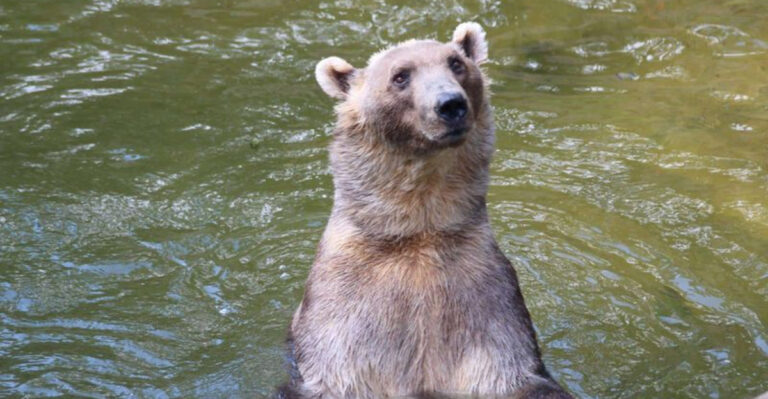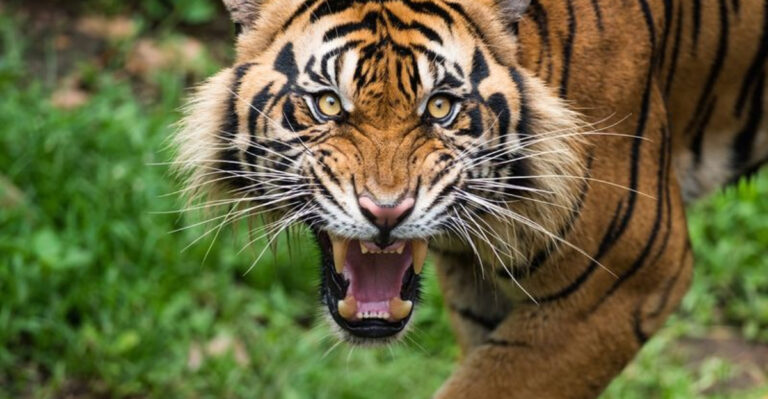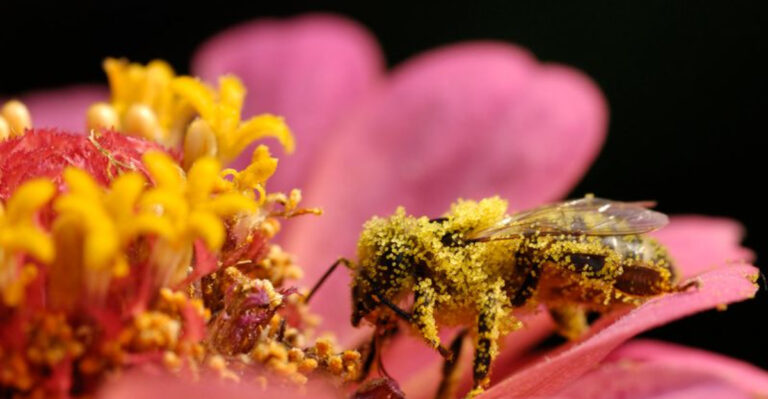12 Creatures That Thrive In The Impossible Depths Of The Mariana Trench
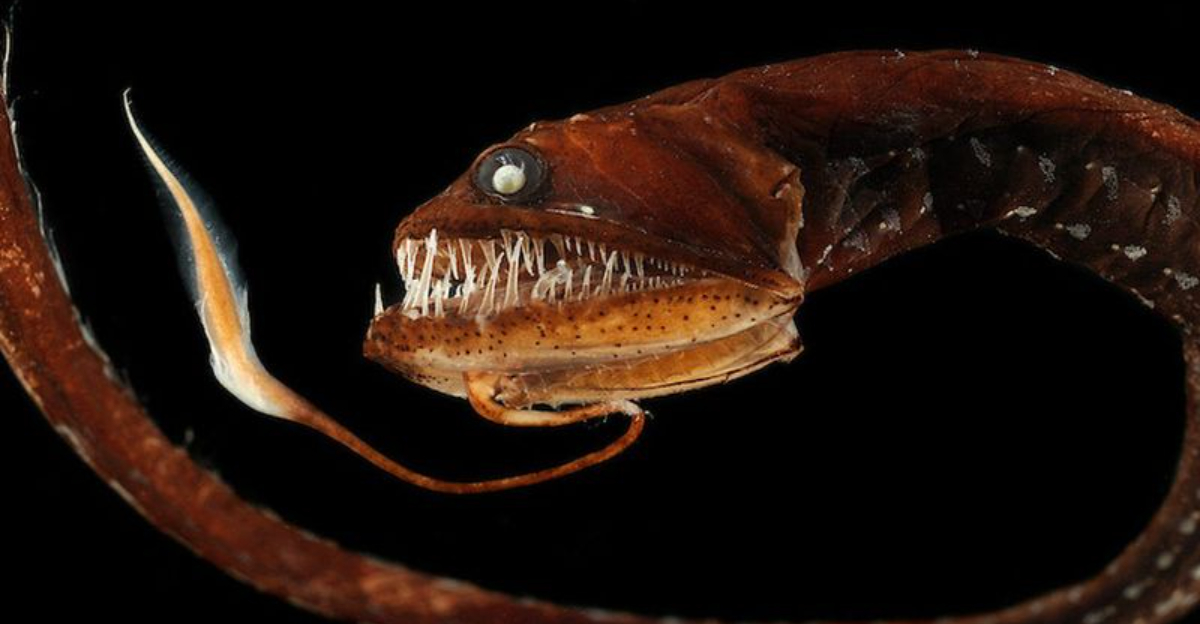
The Mariana Trench is one of the most mysterious and extreme environments on Earth. Located in the Pacific Ocean, it reaches depths of over 36,000 feet. In this dark and high-pressure world, unique creatures have adapted to thrive.
This post explores twelve of these fascinating beings that defy the odds in such an inhospitable place. Each one has its own incredible story to tell.
1. Giant Tube Worm
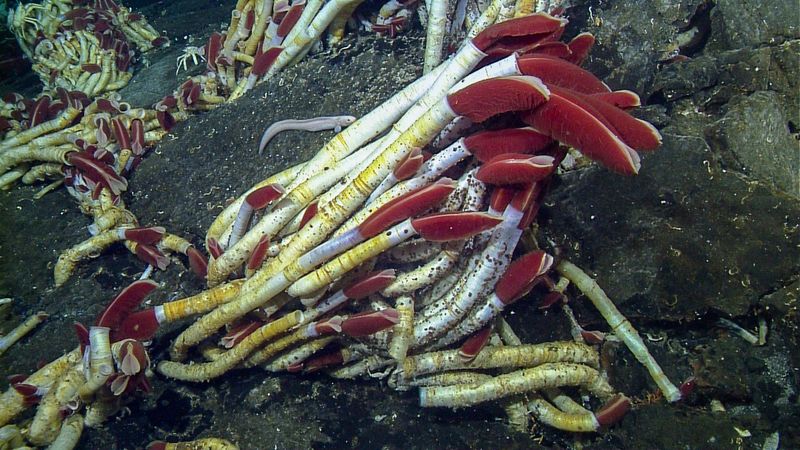
Imagine living without sunlight. Giant tube worms do just that, thriving in complete darkness. These remarkable creatures rely on hydrothermal vents for survival. Their plumes absorb nutrients from the vent’s chemicals. With no digestive system, symbiotic bacteria help them thrive.
They grow up to eight feet tall, forming vast colonies. Their red plumes stand out in the deep sea’s gloom. Giant tube worms are vital to their ecosystem. They provide a haven for other marine life. These strange beings challenge what we know about life. In the trench’s depths, they prove life persists against the odds.
2. Anglerfish
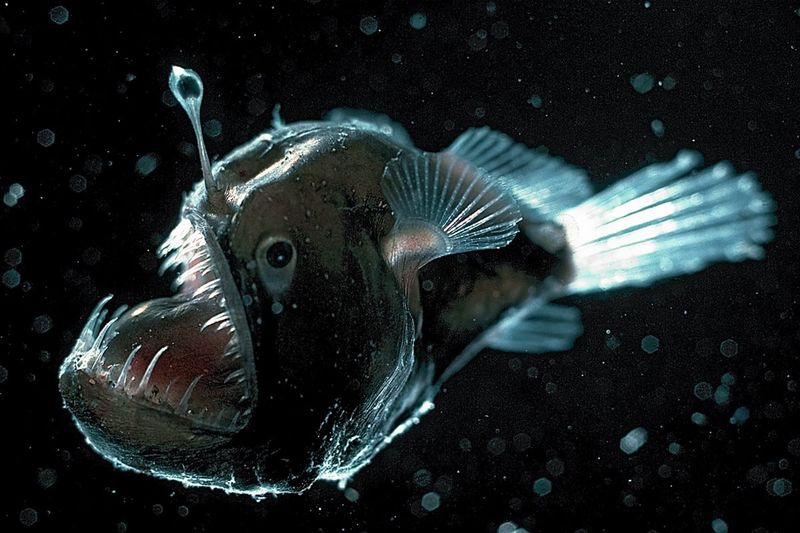
The anglerfish is a master hunter. Its glowing lure attracts unsuspecting prey. In the trench’s darkness, this light is a beacon. Females are much larger than males. Males attach to females permanently, absorbing nutrients. This unique relationship ensures survival in harsh conditions.
Anglerfish have large mouths and sharp teeth. They can swallow prey twice their size. Their appearance is both eerie and fascinating. These creatures embody the trench’s mysteries. Deep-sea adaptations make them formidable predators. Anglerfish remind us that creativity thrives, even in darkness.
3. Dumbo Octopus
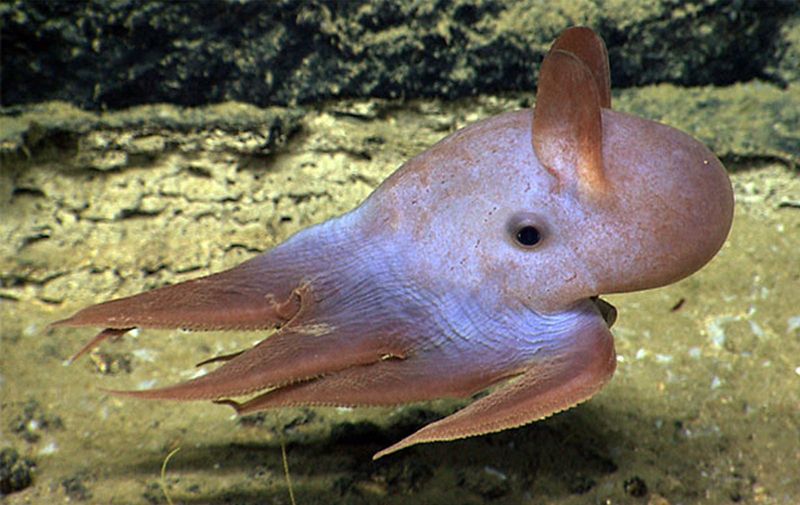
Meet the dumbo octopus, named for its ear-like fins. These gentle creatures are a rare sight. They navigate the deep using graceful flaps. Unlike other octopuses, they lack an ink sac. Predators are scarce in their deep habitat. Dumbo octopuses have a soft, gelatinous body. This helps them withstand intense pressure.
They feed on worms and small crustaceans. Their movements appear almost whimsical. These octopuses bring a hint of playfulness. In their quiet world, they remind us of life’s versatility. Each glide tells a story of adaptation.
4. Goblin Shark
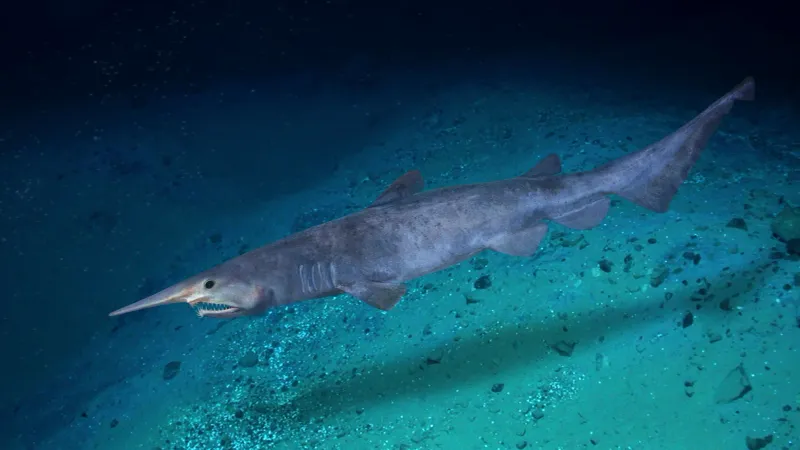
Goblin sharks are living fossils. Their lineage dates back millions of years. With a long snout and sharp teeth, they look fearsome. These sharks are slow swimmers. They hunt using stealth and surprise. Their jaws can extend to catch prey.
Goblin sharks prefer deep, dark waters. Their pinkish hue is due to blood vessels near the skin. They are rarely seen by humans. This makes them even more intriguing. Goblin sharks defy the typical shark image. They are a reminder of evolution’s wonders.
5. Deep-sea Dragonfish
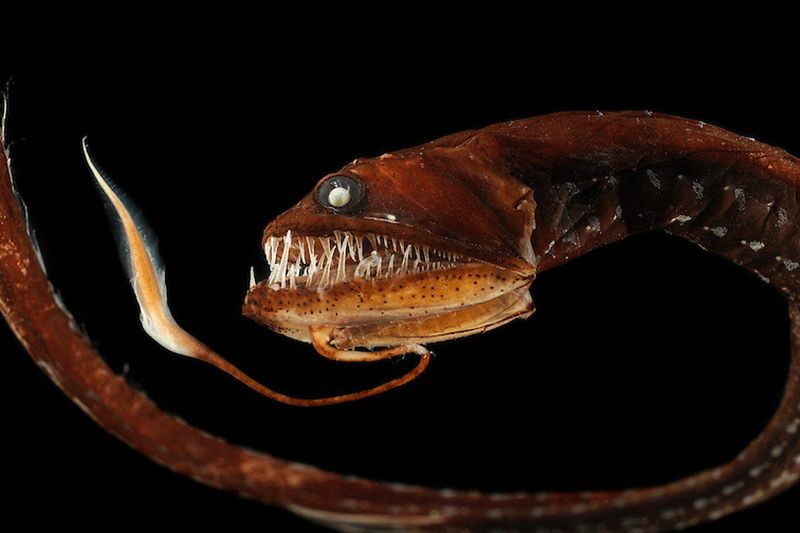
The deep-sea dragonfish is a fearsome predator. It uses bioluminescence to attract prey. Its barbel glows like a tiny lantern. Dragonfish have large eyes to see in the dark. They also have sharp teeth for gripping prey. Despite their small size, they’re skilled hunters.
Dragonfish can produce red light, invisible to most sea creatures. This gives them an edge during hunts. Their appearance is both eerie and captivating. Dragonfish thrive in the trench’s harsh environment. They are a testament to nature’s ingenuity. These hunters bring light to the ocean’s depths.
6. Vampire Squid
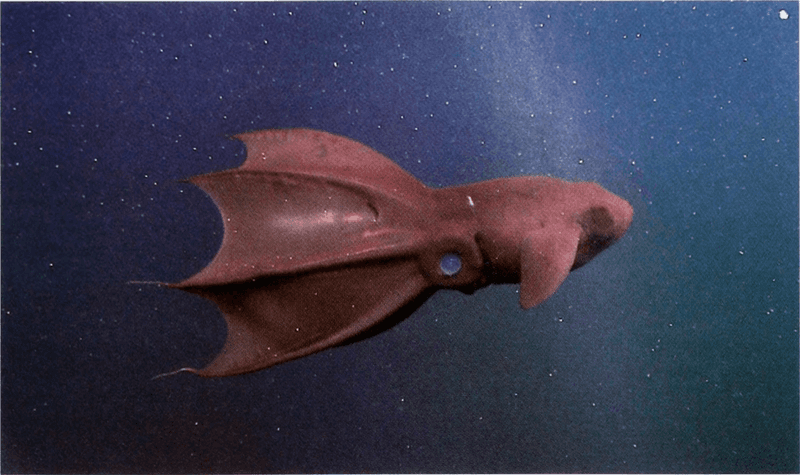
Despite its name, the vampire squid is not a predator. It feeds on detritus in the water. With a cloak-like webbing, it resembles a vampire. Its red body helps it blend into dark surroundings. This squid uses bioluminescence for defense. Its light show deters predators.
Vampire squids have large eyes for low-light vision. They thrive where few others can. Their survival tactics are unique. These squids are a marvel of adaptation. In the trench, they symbolize resilience. Vampire squids embrace the darkness as their ally.
7. Fangtooth Fish
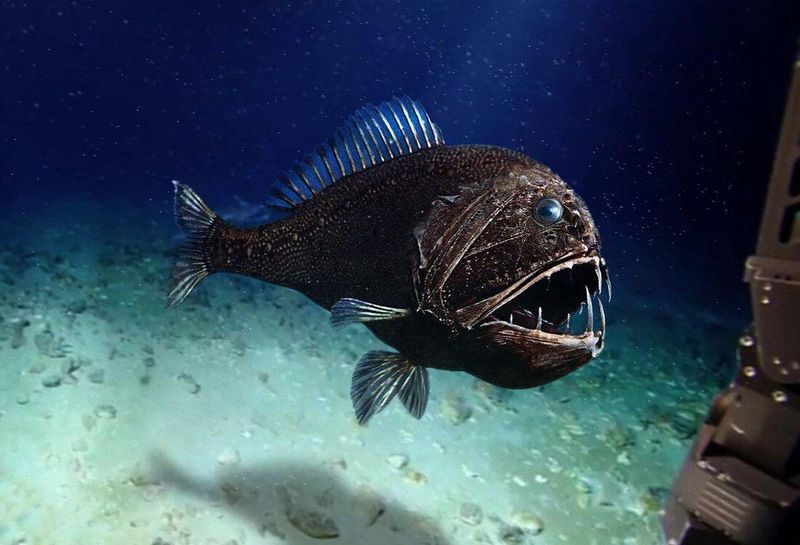
The fangtooth fish is a deep-sea dweller. Its oversized teeth are its signature feature. Despite their frightening appearance, they’re harmless to humans. Fangtooths hunt small fish and squid. They rely on touch and smell to find prey. Their eyes are small, as vision is limited.
Fangtooths can survive in extreme pressures. Their bodies are compact and muscular. This helps them withstand the deep sea’s harshness. Fangtooths prove size isn’t everything. They thrive where few can venture. Their presence is a testament to life’s tenacity.
8. Snailfish
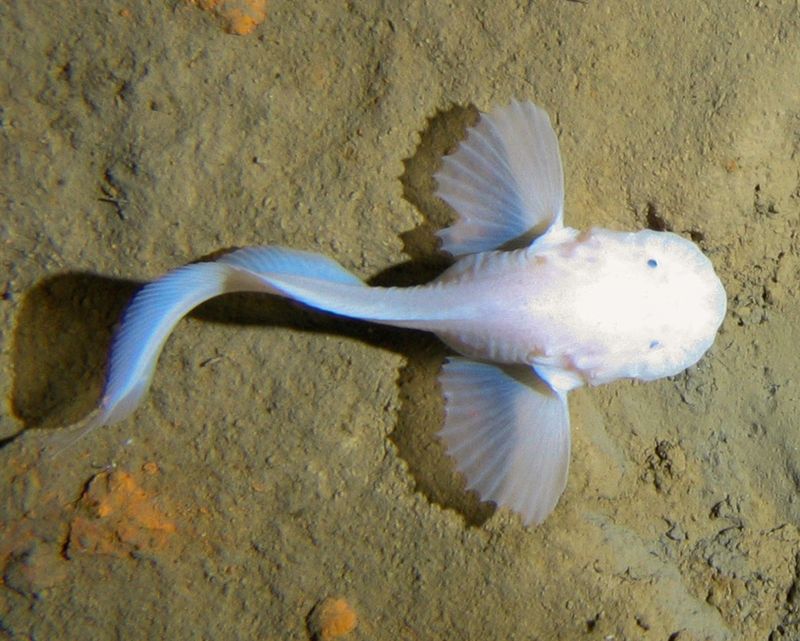
Snailfish are unexpected champions of the deep. Their bodies are gelatinous and translucent. This helps them survive in high-pressure environments. They feed on small crustaceans and worms. Snailfish are the deepest-living fish known. They adapt to cold, dark waters. Their simplicity is their strength.
Snailfish lack scales and have a unique structure. This makes them efficient at low-energy living. In their silent world, they thrive. Snailfish show that adaptability is key. Their existence is a quiet victory in the trench.
9. Frilled Shark
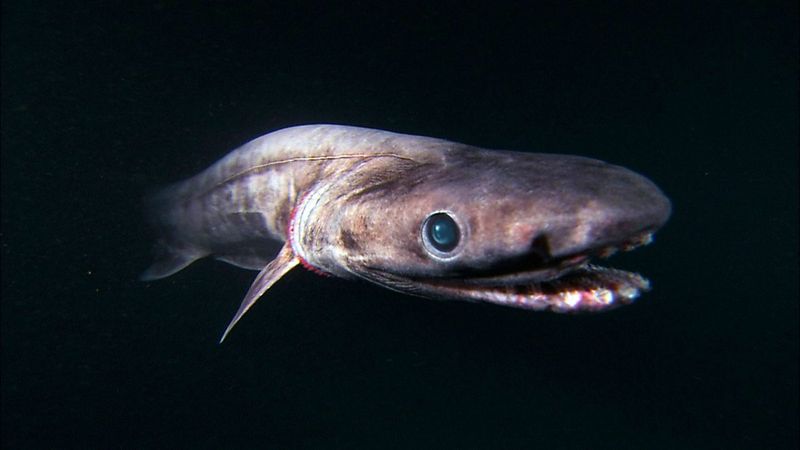
The frilled shark is a creature of the past. Its appearance is almost prehistoric. With a long, eel-like body, it swims slowly. Frilled gills give this shark its name. They hunt by lunging at prey. Frilled sharks have rows of needle-like teeth.
Their diet includes squid and fish. These sharks are rarely seen by humans. This adds to their mystique. Frilled sharks are living relics. They remind us of the ocean’s ancient secrets. In the trench, they glide through time.
10. Barreleye Fish
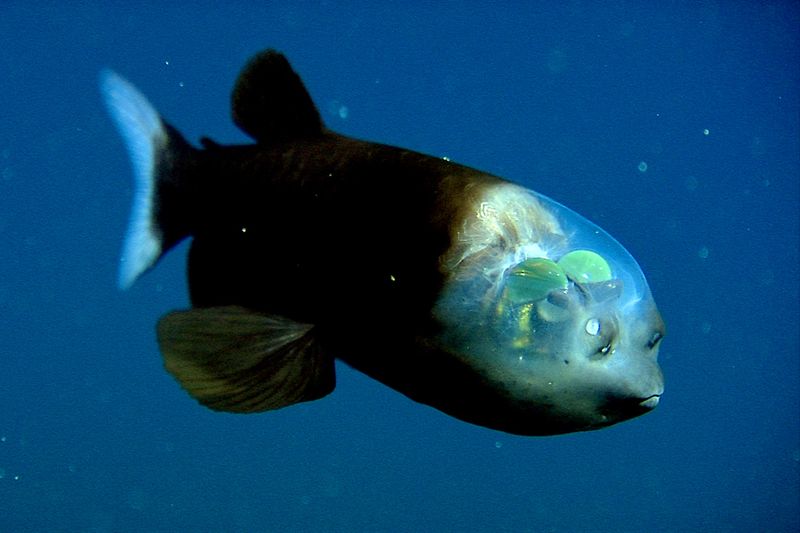
The barreleye fish is fascinatingly unique. Its head is transparent, revealing internal organs. Tubular eyes point upward, detecting prey above. This fish can rotate its eyes forward. Barreleyes feed on small fish and jellyfish. Their appearance is both strange and intriguing.
They thrive in the deep ocean’s stillness. Barreleyes have a keen sense of their surroundings. This aids in survival. Their adaptation is extraordinary. Barreleyes are a reminder of evolution’s creativity. In the trench, they quietly observe the world above.
11. Amphipod
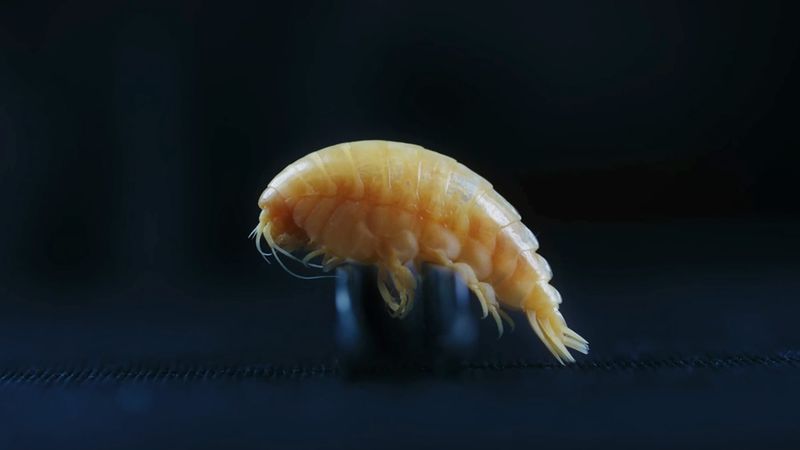
Amphipods are tiny yet mighty. These crustaceans thrive in the trench’s pressure. They scavenge for organic matter. Amphipods vary in size and appearance. Some are transparent, blending into their environment. Despite their small size, they are vital.
Amphipods recycle nutrients in the ecosystem. They are a food source for larger creatures. Their presence ensures the food chain’s balance. Amphipods adapt to extreme conditions. They symbolize resilience in adversity. In the trench, they play an essential role in life.
12. Hatchetfish
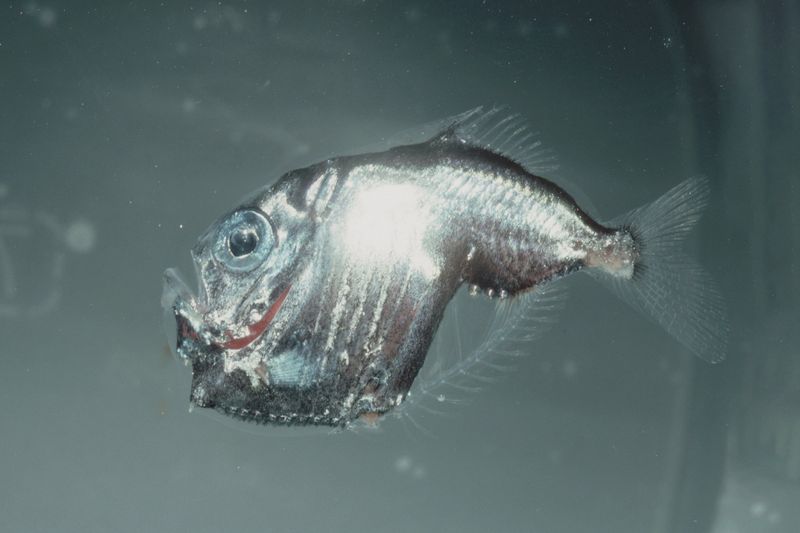
Hatchetfish are masters of disguise. Their bodies are thin and silvery. They reflect minimal light, avoiding predators. Hatchetfish use bioluminescence for camouflage. This helps them match the faint light above. Their eyes are large for better night vision.
Hatchetfish are small but agile. They feed on plankton and small fish. Their survival tactics are clever and effective. In the trench’s darkness, they thrive undetected. Hatchetfish highlight nature’s adaptability. Their lives are a dance of light and shadow.


